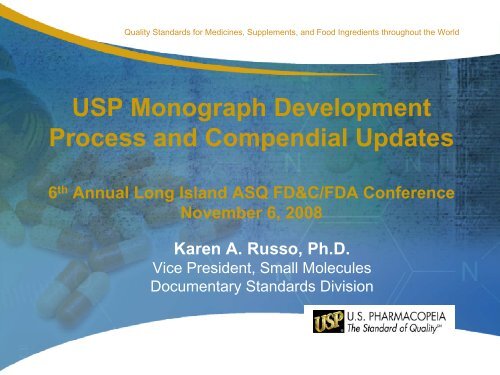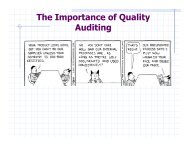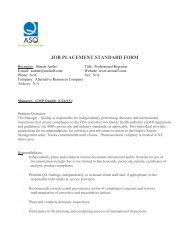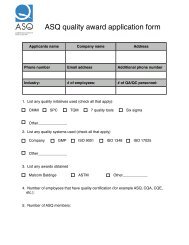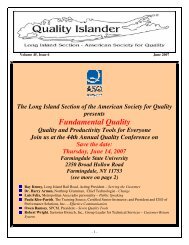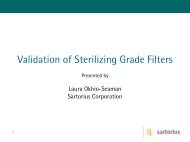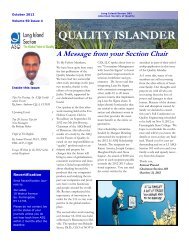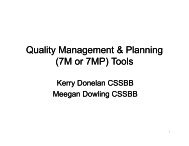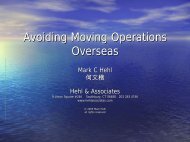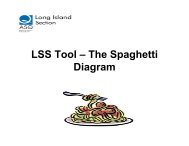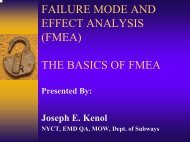USP Monograph Development Process and Compendial Updates
USP Monograph Development Process and Compendial Updates
USP Monograph Development Process and Compendial Updates
- No tags were found...
You also want an ePaper? Increase the reach of your titles
YUMPU automatically turns print PDFs into web optimized ePapers that Google loves.
Quality St<strong>and</strong>ards for Medicines, Supplements, <strong>and</strong> Food Ingredients throughout the World<strong>USP</strong> <strong>Monograph</strong> <strong>Development</strong><strong>Process</strong> <strong>and</strong> <strong>Compendial</strong> <strong>Updates</strong>6 th Annual Long Isl<strong>and</strong> ASQ FD&C/FDA ConferenceNovember 6, 2008Karen A. Russo, Ph.D.Vice President, Small MoleculesDocumentary St<strong>and</strong>ards Division
Outline• <strong>USP</strong> Overview– Legal recognition– Council of Experts• St<strong>and</strong>ards Setting– <strong>Process</strong>– Flexible monographs– Pending monographs– Reference st<strong>and</strong>ards• <strong>Compendial</strong> <strong>Updates</strong>– <strong>Monograph</strong> redesign– General Notices redesign– PF Redesign– Residual Solvents– Heavy Metals
United States PharmacopeialConvention
<strong>USP</strong> Overview• Nonprofit international public health organization• Private, independent, <strong>and</strong> self-funded• Global activities <strong>and</strong> impact• Establishes quality st<strong>and</strong>ards (<strong>USP</strong>, NF, FCC)• Expert volunteers are scientific decision-makers• ISO-9001 <strong>and</strong> ISO-17025• LocationsRockville, MD (headquarters)Basel, Switzerl<strong>and</strong>Hyderabad, IndiaShanghai, ChinaSao Paulo, Brazil
Legal Recognition1848 Drug Import Act: <strong>USP</strong> legislatively m<strong>and</strong>ated1906 Federal Pure Food & Drugs Act: <strong>USP</strong> st<strong>and</strong>ardsrecognized1938 Federal Food, Drug, <strong>and</strong> Cosmetic Act: <strong>USP</strong>st<strong>and</strong>ards recognized as FDA-enforceable1994 Dietary Supplement Health & Education Act: Adietary supplement represented as conforming to <strong>USP</strong>–NFspecifications shall be deemed misbr<strong>and</strong>ed if it fails to doso.2003 Medicare Prescription Drug, Improvement, <strong>and</strong>Modernization Act: <strong>USP</strong> will create Model Guidelines – alist of categories <strong>and</strong> classes that prescription drug plansmay use as they design their formularies
<strong>USP</strong> <strong>and</strong> FDA Responsibilities• <strong>USP</strong>: Identity, strength, quality, <strong>and</strong> purity ofofficial articles• FDA: Safety <strong>and</strong> efficacy• Shared responsibilities: nomenclature,packaging, labeling
2005-2010 Council of ExpertsFood AdditivesExpert Committee
114 Experts are from 31 Countries• Argentina 1• Austria 2• Australia 1• Belgium 3• Brazil 2• Canada 22• Chile 1• China 2• Colombia 2• Denmark 3• France 2• Germany 3• Hungary 1• India 16• Irel<strong>and</strong> 1• Israel 1• Italy 2• Jordan 1• Mexico 2• The Netherl<strong>and</strong>s 1• Norway 1• Peru 2• Panama 1• Russian Fed 11• Scotl<strong>and</strong> 1• S. Africa 1• S. Korea 2• Sweden 3• Switzerl<strong>and</strong> 4• UK 18• Venezuela 1
2005-2010 Expert Committee DemographicsAcademia (24%)Government (13%)Practitioners &Consultants (13%)Industry (37%)International (13%)2005 – 2010 Revision Cycle
St<strong>and</strong>ards Setting
Why a <strong>USP</strong>-NF <strong>Monograph</strong>?• Recognized under the Federal Food, Drug, <strong>and</strong>Cosmetic Act• Assessing quality of drug products in commercialdistribution over their shelf life• Monitoring for counterfeit products <strong>and</strong> quality ofimported drug products• Data-driven• Transparent processes with public review <strong>and</strong>comment• Reviewed <strong>and</strong> approved by <strong>USP</strong> Council ofExperts• Continuous revision• Supported by General Chapters <strong>and</strong> GeneralNotices
Requests for Revision• Written request <strong>and</strong>/or justification for revision• Submission packages– Indication of regulatory status– Tests, procedures <strong>and</strong> acceptance criteria– Validation reports/data– Data for three lots of material (ideal)– Chemical names <strong>and</strong> structures of impurities– Description <strong>and</strong> solubility– Packaging <strong>and</strong> storage– Safety-related labeling information
Submission Information on Web Site• Submission guidelineshttp://www.usp.org/<strong>USP</strong>NF/submit<strong>Monograph</strong>/subGuide.html• Also on this site– Submission Checklist– Guideline for Suppliers of Reference St<strong>and</strong>ard Materials• High Priority <strong>Monograph</strong> Listhttp://www.usp.org/<strong>USP</strong>NF/submit<strong>Monograph</strong>/newMon.html
Document Disclosure• <strong>USP</strong> maintains the confidentiality nature ofdocumentation• Confidential documents can be shared with theFDA upon requests• <strong>USP</strong> Document Disclosure Policy is available athttp://www.usp.org/about<strong>USP</strong>/governance/policies/overviewSt<strong>and</strong>ardsSetting.html
<strong>USP</strong> St<strong>and</strong>ards Setting <strong>Process</strong><strong>Monograph</strong> is received/development initiatedScientific Liaison performs technical review<strong>and</strong> drafts the monograph<strong>Monograph</strong> is published for publicreview <strong>and</strong> commentScientific Liaison reviews comments; submitscomments to Expert CommitteeNot approvedExpert Committee ballotsApproved<strong>Monograph</strong> is published in official publication(<strong>USP</strong>-NF, FCC)
Pharmacopeial Forum• Your voice in st<strong>and</strong>ardsdevelopment• Bimonthly journal with– Proposed revisions to <strong>USP</strong>-NFst<strong>and</strong>ards for your comments– Official revisions to st<strong>and</strong>ards– <strong>Updates</strong> on internationalharmonization– Stimuli articles
Role of <strong>USP</strong> Expert Committees• Evaluate submissions <strong>and</strong> comments• Decide if additional public review <strong>and</strong> comment isneeded or may incorporate changes before revision isadopted as official• Vote– Simple majority is required– Members with conflicts abstain• Advise– Next steps for items not approved– General strategy
Flexible <strong>Monograph</strong>s: Rationale• Flexible to account for different routes of synthesis– Control of impurities utilizes the approaches contained inICH Q3A, Q3B, <strong>and</strong> Q3C• Multiple dissolution procedures, especially forextended release products• Considers hydrates/solvates, polymorphs• Unambiguous document in support of ORA inspection• Use of procedure-specific <strong>USP</strong> Reference St<strong>and</strong>ards
Flexible <strong>Monograph</strong>s: Examples• Ethinyl Estradiol Drug Substance• Loratadine Drug Substance• Meloxicam Drug Substance• Paroxetine Drug Substance• Potassium Chloride Extended-Release Tablets• Theophylline Extended-Release Capsules
Flexible <strong>Monograph</strong> ExampleLoratadine drug substanceLabeling—If a test for Related compounds other than Test 1 is used,then the labeling states with which Related compoundstest the article complies.Related compounds—NOTE—On the basis of the synthetic route, perform eitherTest 1 or Test 2. Test 2 is recommended if 4,8-dichloro-6,11-dihydro-5H-benzo[5,6]cyclohepta[1,2-b]pyridin-11-one is a potential related compound.TEST 1—…TEST 2—…
Flexible <strong>Monograph</strong> ExampleTheophylline Extended Release CapsulesLabeling—The labeling indicates whether theproduct is intended for dosing every 12 or 24hours, <strong>and</strong> states with which in vitro DissolutionTest the product complies.Dissolution —Test 1—…Test 2—……Test 10—…
<strong>USP</strong> Publications• Time-tested,international resource• Official authority—FDA-enforceablest<strong>and</strong>ards• More than 4,500monographs• Drug products <strong>and</strong>substances, excipients,dietary supplements• General chapters• Continuously updated
<strong>USP</strong> PublicationsFood Chemicals Codex<strong>USP</strong> Pharmacists’ Pharmacopeia
<strong>USP</strong> Publications<strong>USP</strong> Dietary SupplementsCompendiumTarget launch date – February2009
<strong>USP</strong> Reference St<strong>and</strong>ards
<strong>USP</strong> Reference St<strong>and</strong>ards• Trusted for pharmaceutical quality controlworldwide• Support FDA-enforceable st<strong>and</strong>ards <strong>and</strong> tests in<strong>USP</strong>-NF• Over 2200 Reference St<strong>and</strong>ards now available• Highly characterized• Potency stated on label• Stocked <strong>and</strong> ready to ship (2-day delivery withinU.S.)• <strong>USP</strong> Reference St<strong>and</strong>ards Expert Committee
<strong>USP</strong> RS <strong>Development</strong> <strong>Process</strong>1. Create bulk c<strong>and</strong>idate procurementspecifications (1 month)2. Procure c<strong>and</strong>idate material (0-6 months)3. Design test plan (1 month)4. Collaborative testing (2-3 months)5. Review/compile data (0.5 months)6. Expert Committee review <strong>and</strong> approval (0.5months)7. Package (0.5 months)8. QC testing (1 week)9. QA release (8-14 months total)
Reference St<strong>and</strong>ards Practices• All first-time <strong>USP</strong> Reference St<strong>and</strong>ardc<strong>and</strong>idates required in a proposednew/revised monograph or general chapterneed to be received by <strong>USP</strong> prior topublication in for public review <strong>and</strong>comment.• New monographs/chapters <strong>and</strong> revisionsthat introduce new <strong>USP</strong> ReferenceSt<strong>and</strong>ards will not become official until therequired <strong>USP</strong> Reference St<strong>and</strong>ard(s) areavailable for sale.
<strong>Compendial</strong> <strong>Updates</strong>
<strong>Monograph</strong> Redesign• Fewer words, simpler formatting• Eliminate cross-references between monographs• Distinct monograph sections– Definition– Identification–Assay– Impurities (Inorganic, Organic)– Specific Tests (water, LOD, pH, etc)– Performance Tests (Dissolution, viscosity)– Additional Requirements (Packaging & Storage, <strong>USP</strong>Reference St<strong>and</strong>ards)
<strong>Monograph</strong> Redesign• Well defined acceptance criteria• Simplify solution preparation instructions• Consistent naming convention (Related Compounds<strong>and</strong> Chrom. Impurities eliminated)• Improved tables <strong>and</strong> descriptions of gradients• Changes in solution descriptions• Complete equations• “No longer a recipe”—assumes technicalknowledge• Longer monographs
<strong>Monograph</strong> Redesign Timeline• June 2008: Conversion to new format completed• September 2008: Major subset of monographsavailable at the <strong>USP</strong> Annual Scientific Meeting• November 2008:– PDFs available for 90 days on <strong>USP</strong> web sitehttp://www.usp.org/monoRedesign/– Available to all– Registration required– Online commenting system• March 2009: PF 35(2) [Mar-Apr 2009] is publishedusing new format• November 2009: Redesigned monographsincorporated into <strong>USP</strong>33-NF26• May 2010: <strong>USP</strong>33-NF26 official
<strong>Monograph</strong> Redesign
<strong>Monograph</strong> Redesign Example
General Notices Redesign• Ease of use– Update language– Numbered headings for easier navigation• Refocus– Provide the basic assumptions, definitions, <strong>and</strong> defaultconditions for the compendia– Move selected text to General Chapters, Mission, etc• Clarify applicability of text– Drug substance/product– Drug/dietary supplement– Manufactured/compounded
General Notices RevisionExcerpt from <strong>USP</strong>32-NF25 General Notices
General Notices Revision• Timeline– May-Aug 2007: first draft published on <strong>USP</strong> websitefor comments– Jan-April 2008: Second draft in PF 34(1) <strong>and</strong> on theweb site; comment period ended April 15, 2008– Spring 2008: Final draft approved (Phase I)– Nov 2008: <strong>USP</strong>32-NF27 is published with Phase Irevisions– May 1, 2009: <strong>USP</strong>32-NF27 becomes official
General Notices Phase I Revisions• Legal Status of <strong>USP</strong> (partial revision)• Definition of units to be taken – eliminated• Compliance to GMPs – partially retained (notcGMP)• ICH’s 0.10% impurity level (instead of 0.1%) notincorporated, yet…• <strong>USP</strong> will not define testing intervals or define thesize of a “representative” sample• Compliance to water st<strong>and</strong>ards outside the USare not specifically addressed• Equivalent or better is required for alternativeprocedures• “Must pass if tested” text strengthened
Major Issues for Phase II• Issues– Change the name of <strong>USP</strong>-NF? (e.g, <strong>USP</strong>-NF 2011)– <strong>Development</strong> of a companion volume– Merging of General Notices across publications– Definition of “Official”– Definition of performance-based procedures <strong>and</strong> tests• Ongoing discussions with Expert Committees,FDA, stakeholders
Pending <strong>Monograph</strong>s• Enables monograph development <strong>and</strong> publicationbefore FDA approval has been granted to a genericmanufacturer• Ultimate purpose is to have an official <strong>USP</strong>monograph ready as soon as possible after FDAapproval of an application (i.e., ANDA)• <strong>USP</strong> Pending <strong>Monograph</strong>s web site iswww.usp.org/st<strong>and</strong>ards/pending/
Pending <strong>Monograph</strong>s• Sponsors– Who have filed or intend to file with FDA an AbbreviatedNew Drug Application (ANDA) or Abbreviated New AnimalDrug Application (ANADA)– Who have submitted a Drug Master File (DMF) to FDA– Whose substance is or will be the subject of a Time <strong>and</strong>Extent Application or citizen petition to amend an FDAOTC drug monograph• Documentation– Statement of intent to file an ANDA or ANADA within sixmonths– Copy of the DMF filing letter
Pending <strong>Monograph</strong>s <strong>Process</strong><strong>Monograph</strong> development beginsDraft Pending <strong>Monograph</strong> is posted for90-day public review periodRelevant Expert Committee(s) ballotsIf approvedAuthorized Pending <strong>Monograph</strong> is postedFDA approves Sponsor’s application (ANDA)Relevant Expert Committee(s) ballotsIf approvedPending <strong>Monograph</strong> becomes official via Revision BulletinOfficial monograph is published in <strong>USP</strong> Book or Supplement
PF Redesign• Current situation– Does not allow for “public” notice <strong>and</strong>comment, given limited subscription– Inclusion of official text (approved IRAs, Errata) whichoften leads to confusion• Challenges with existing PF format– Difficult to follow <strong>and</strong> underst<strong>and</strong>– Format, flow <strong>and</strong> terminology are not intuitive– Readability is challenging with strikeouts <strong>and</strong> marked-uptext– Overlapping deadlines with <strong>USP</strong>-NF cause confusion– Long publication lead times for print edition
PF Redesign• Transition to on-line version of PF only– Discontinue print version in 2010– Make publicly available, free of charge• Obtain input from broader group of users• Help avoid situations where companies areunaware of proposed changes until adopted– Retain existing publication schedule (six issues,posted on 1 st day of 1 st month of issue)– Reorganize for greater readability, ease of use inreviewing proposals– St<strong>and</strong>ardize comment period for all proposals at90 days
PF Redesign• Remove official text from PF– PF used only for proposed revisions <strong>and</strong> relatedinformation– Will no longer contain approved IRAs or Errata• IRAs, Revision Bulletins <strong>and</strong> Errata will be postedon <strong>USP</strong> website in new “official text” section• Published in next <strong>USP</strong>-NF or Supplement <strong>and</strong>removed from web site or archived once published• Dual publication of official text in print PF <strong>and</strong> website in 2009
PF Redesign• St<strong>and</strong>ardize <strong>and</strong> simplify processes foraccelerated revisions– Guideline on Accelerated Vehicles to be developed– Three types only• IRAs– 90 day notice <strong>and</strong> comment• Revision Bulletins– No notice <strong>and</strong> comment required, but may includeopportunity for stakeholder input depending onimpact <strong>and</strong> feasibility• Errata– Posted on monthly basis at end of each month– Official the 1 st day of second month following postingunless otherwise specified
PF Redesign• Redesign <strong>USP</strong>-NF Web site for easynavigation• No change to <strong>USP</strong>-NF <strong>and</strong> Supplements– Retain print <strong>and</strong> online versions– Maintain existing publication schedules• Obtain user input– Regular user input throughout process via meetingswith industry Project Team– Seek broader input from customers using variousavenues
PF Redesign• Outst<strong>and</strong>ing Issues– Registration process to monitor “public” access to PF– Enhancements to online PF• Visible publication date• Pagination, line numbers, etc to reference when commenting• Clarification of what changes are being proposed• Use of symbols– High-impact revisions that require additional opportunity forinput• <strong>Process</strong> for obtaining input prior to 90 day st<strong>and</strong>ard notice <strong>and</strong>comment period• Must be presented in a readily noticeable way– Need for “archiving” of official text on web site to allowtracking– Harmonization—Stage 6 publication/posting
PF Redesign• September 2008: ASM presentation <strong>and</strong> discussion• January 2009:– Implement new Guideline on Accelerated Text Vehicles(approving <strong>and</strong> posting all IRAs, RBs, <strong>and</strong> Errata monthly)– Revise <strong>USP</strong>-NF section of web site to include new official textsection– Begin dual presentation of IRAs <strong>and</strong> Errata in PF <strong>and</strong> on website for transition year• January 2010:– Online PF only– Remove official text from PF <strong>and</strong> post on web site only– Revise Guideline to reflect official text on web site only
<strong>USP</strong>31-NF26 General Notices TextResidual Solvents—The requirements are stated in ResidualSolvents together with information in Impurities in OfficialArticles . Thus all drug substances, excipients, <strong>and</strong>products are subject to relevant control of residual solvents, evenwhen no test is specified in the individual monograph. Therequirements have been aligned with the ICH guideline on this topic. Ifsolvents are used during production, they are of suitable quality. Inaddition, the toxicity <strong>and</strong> residual level of each solvent are taken intoconsideration, <strong>and</strong> the solvents are limited according to the principlesdefined <strong>and</strong> the requirements specified in Residual Solvents ,using the general methods presented therein or other suitablemethods. (Official July 1, 2008)
Residual Solvents• Organic Volatile Impurities– <strong>USP</strong> XXII, 9 th supp. (1993)– Only 4 solvents are tested (Class 2)– Chapter referenced in specific monographs• Residual Solvents– Intent to align with ICH Q3C (1997)– 59 solvents• Subsequent revisions– PF 32(5) [Sept-Oct 2006]– IRA in PF 33(3) [May-June 2007]– Latest updates – PF 34(3) [May-June 2008]; target officialpublication is the First Supplement to <strong>USP</strong>32-NF27
Residual Solvents• Testing of drug substances, excipients, <strong>and</strong> drugproducts for residual solvents should be performedwhen production or purification processes areknown to result in the presence of such residualsolvents.• It is only necessary to test for residual solvents thatare used or produced in the manufacture orpurification processes.• Solvent used or produced in the final manufacturingstep <strong>and</strong> solvents that are used or produced inearlier manufacturing steps <strong>and</strong> not removedconsistently by a validated process.
Residual Solvents• Classes of residual solvents based on toxicity– Class 1 – Highest toxicity; should be avoided in alldrugs– Class 2 – Less toxic, should be limited in all drugs– Class 3 – Low toxicity; generally deemed safe to 5000ppm or 0.5%– Other Solvents (“Class 4”) – No AdequateToxicological Data
Proposal - PF34(3) [May-June 2008]Table 5. Headspace Operating Parameters1 2 3Equilibration temperature (°C) 80 105 80Equilibration time (min.) 60 45 45Transfer-line temperature (°C) (Ifappropriate)85 110 105Syringe Temp (°) (If appropriate) 80-85 80-85 80-85Carrier gas (35 cm/sec)Nitrogen or HeliumPressurization time (sec.) ≥60 ≥60 ≥60Injection volume (mL)* 1 1 1*Or follow instrument manufacturer’s recommendations, as long asmethod criteria are met. Injecting less than this amount is allowed aslong as adequate sensitivity is achieved.
Educational Activities• Residual Solvents Short Course• Navigating Chapter Residual Solvents– Web-based course• Check <strong>USP</strong> web site for dates
Heavy Metals• Significant impact to industry expected• Current methodology is outdated– Difficult to run, not specific– Safety issues– Almost impossible to fail due to poor recovery issues• Stimuli article, Pharmacopeial Forum 34(5):1345-1347[Sept-Oct 2008] <strong>and</strong> on the <strong>USP</strong> web site• Revised will be a performance-basedapproach– Chapter will provide acceptance criteria <strong>and</strong> st<strong>and</strong>ards– Any method that meets the criteria is acceptable– Chapter provides default procedure
Heavy Metals• <strong>USP</strong> is actively seeking industry input– <strong>USP</strong> Annual Scientific Meeting September 2008– Institute of Medicine Meeting August 2008• Discuss specifications <strong>and</strong> st<strong>and</strong>ards for metals testing• Which Metals?• Risk Assessment <strong>and</strong> Limit Setting• Modifying Factors for Risk Assessment• Measurements• Scope: drugs, excipients, food, dietary supplements• EMEA Guideline on the Specification Limits for Residues ofMetal Catalysts– <strong>USP</strong> Advisory Panel– Industry Project Team
Heavy Metals--TimelineSummer2008August2008Sept2008Dec2008Jul-Aug2009August2009Oct2009June2010StimuliArticle fromAdvisoryPanelPosted onwebIOMMetalsToxicologyWorkshopWashington,D.C.Stimuli ArticlePF 34(5) Sept-Oct 2008AnnualScientificMeetingImpuritiesSessionStim articlecommentperiod endsAdvisoryPanel meetsDraftChapterPublishes inPF 35(4)Ref Stds(s)bulks inhouseHeavyMetals WebMeetingsforpublic dialogOct. 15commentperiod endsAdvisoryPanel meetsChapterpublished inSupplement 2to <strong>USP</strong> 33Dec. 2010Delayed officialdate: ?Ref Stds(s) incatalogDeadlines Dec 15, 2008 Mar 20, 2009Oct 2009 Feb 20102010—General Chapter PublishedOfficial Date to be determinedExpert Committee: General Chapters, James DeMuth, ChairAdvisory Panel: Heavy Metals, Nancy Lewen, ChairProject Team: Heavy Metals <strong>and</strong> Inorganic Impurities, Fran Byrne, Chair= Where We Are on Timeline
<strong>Compendial</strong> Toolshttp://www.usp.org/<strong>USP</strong>NF/compendialTools.html
Uniformity of Dosage Form Calculator
Column Equivalency
Column Equivalency
Quality St<strong>and</strong>ards for Medicines, Supplements, <strong>and</strong> Food Ingredients throughout the World


